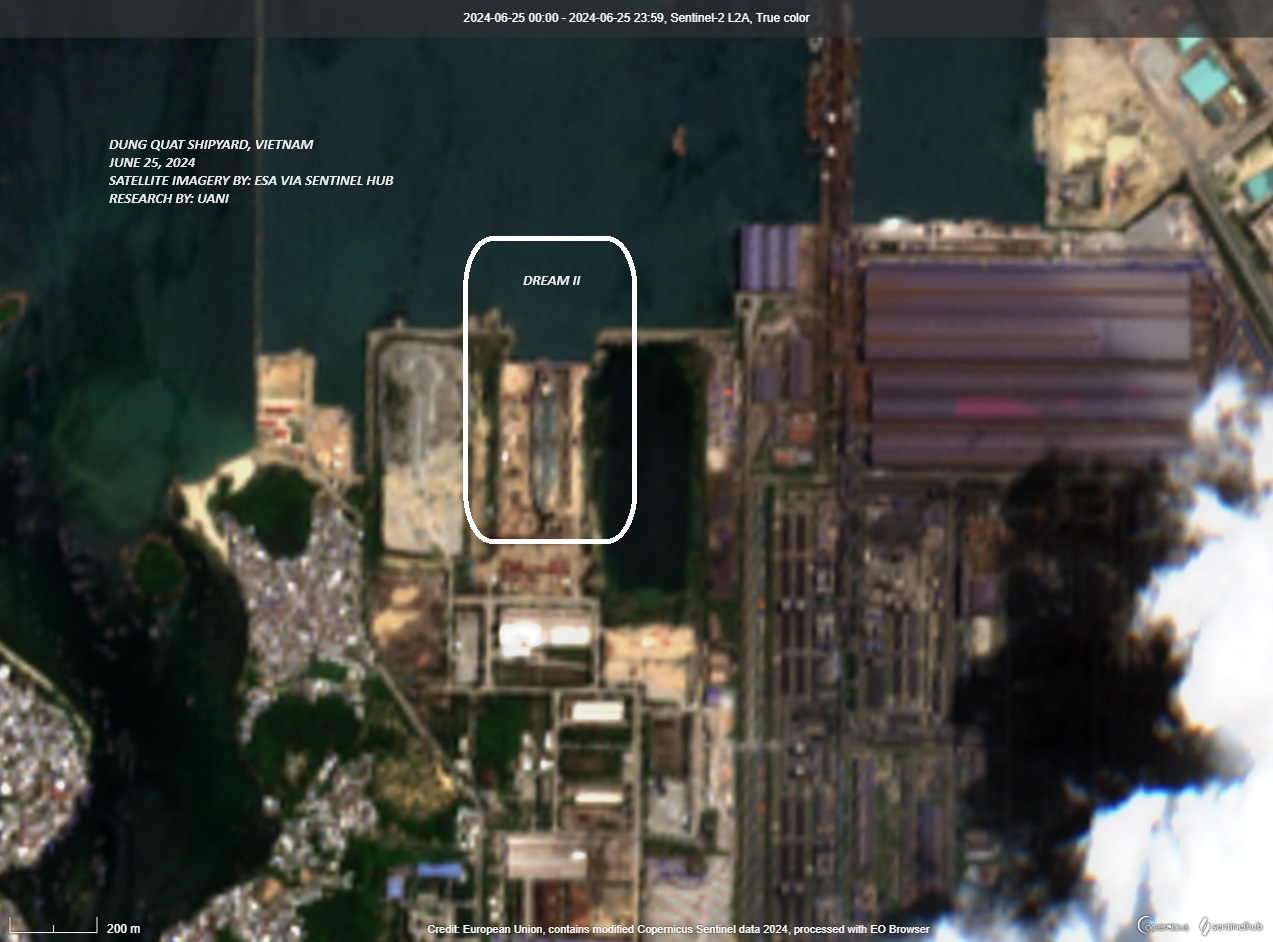June 2024 Iran Tanker Tracking
As the U.S. continues to apply sanctions aimed at curbing Iranian oil exports—most recently on June 25—the regime in Tehran continues to get around them. One underreported tactic involves using Chinese shipyards to repair and maintain its fleet of tankers. This cooperation is not only a breach of sanctions but also a crucial enabler for Iran to continue exporting its oil, thereby funding its terrorism and regional destabilization. This month, China decreased its Iranian oil imports to more than 1.2 million barrels per day:
| Country of Destination | June 2024 - Barrels Per Day (bpd)* | May 2024 - Barrels Per Day (bpd)* | April 2024 - Barrels Per Day (bpd)* |
| China | 1,293,160 | 1,582,746 | 1,388,073 |
| Syria | 28,574 | 67,776 | 57,490 |
| UAE | 107,119 | 65,456 | 64,969 |
| Oman | 0 | 10,283 | 0 |
| Unknown | 14,587 | 67,916 | 23,973 |
| Total | 1,443,441 | 1,764,176 | 1,534,805 |
*Figures to be updated over the following weeks
Chinese shipyards have proven a crucial lifeline for Iran’s aging fleet of oil tankers. As sanctions have made it increasingly difficult for Iran to access international repair facilities, Chinese shipyards have stepped in. These shipyards provide the necessary maintenance and repairs that keep Iran’s tankers operational, allowing them to transport oil across the globe despite the sanctions imposed on the regime. China is directly undermining the efforts to isolate Iran economically and pressure it into abandoning its nuclear and terrorist activities.
The ability to maintain its fleet is obviously critical for Iran to continue its oil exports. Despite U.S. sanctions, Iran has successfully exported $100 billion worth of oil since 2021. These exports are Iran’s main source of revenue, which it uses to fund various terrorist groups and proxy wars across the Middle East. Oil money is instrumental in supporting organizations such as Hezbollah and the Houthis, which are responsible for numerous terrorist activities and regional conflicts.
China's role in all this must not be understated, even beyond its status as the number one importer of Iranian oil. By providing repair and maintenance services to Iranian tankers, China is a willing and active participant in enabling Iran’s illicit oil trade. In the first half of 2024, 19 different Iranian tankers spent a combined 896 days at Chinese shipyards getting repaired.
Chinese Shipyards Repairing Sanctioned Iranian Tankers in 2024
- Zhoushan Daishan Haizhou Shipyard
- Zhousham IMCC – YY Shipyard
- Zhoushan Jinhai Heavy Shipyard
- Zhoushan Zhongli Shipyard
China’s actions set a dangerous precedent. China’s willingness to completely ignore sanctions for its economic and strategic gains—in combination with a U.S. unwillingness to do anything serious to stop it—encourages other countries to do the same. For example, this month, we saw a sanctioned Iranian tanker dock for repairs at Dung Quat Shipyard, Vietnam. We should expect more of this.

Satellite imagery of Iranian Tanker DREAM II at the Dung Quat Shipyard, Vietnam (Source: Sentinel Hub)
China must be held accountable for its ongoing role in sustaining Iran’s oil exports. By allowing Iran to maintain its tanker fleet, China is undermining U.S. efforts and contributing heavily to the Middle East instability. In particular, any shipyard found to be helping Iranian oil-carrying tankers should be considered suitable targets for U.S. sanctions.
Receive Iran News in Your Inbox.
Eye on Iran is a news summary from United Against Nuclear Iran (UANI), a section 501(c)(3) organization. Eye on Iran is available to subscribers on a daily basis or weekly basis.